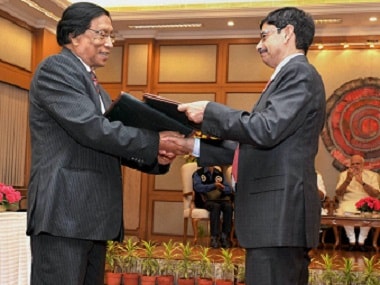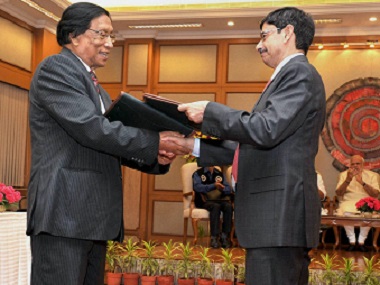A cautious sense of optimism prevails over the fate of the broad ‘framework agreement’ signed between the Government of India and the Northeast’s most potent insurgent group, the National Socialist Council of Nagaland (Isak Chishi-Muivah) (NSCN-IM) faction. At the signing ceremony in New Delhi on Monday, Thuingaleng Muivah, general secretary of NSCN (IM) said: “Beginning from now, the challenges will be great, so will the responsibility… The obligation to meet the needs of the people shall be paramount for both the parties to make this historic endeavour more meaningful,” The caution expressed by other regional leaders stemmed less from any inherent skepticism than the absence of clarity on the salient features agreed upon by Government and the “most potent NSCN (IM) faction”. The president of the Naga Hoho (the apex body of the Nagas) P Chuba Ozukum neatly summed up the dilemma, saying, “We are happy and welcome the accord, but we need to see its contents before making further comments.” Meanwhile, political leaders and the people of Assam, Manipur, Arunachal Pradesh and even Myanmar, maintain a wary approach as Nagas inhabit all these states (and Myanmar), and the establishment of ‘Greater Nagaland’ or the unification of Naga contiguous areas has been the principal demand of the NSCN (IM) for many years. [caption id=“attachment_2378474” align=“alignleft” width=“380”] Prime Minister Narendra Modi witnessing the exchange of historic peace accord between Government of India & NSCN (IM) in New Delhi on Tuesday. PTI[/caption] “The Naga unification or Nagalim that the NSCN (IM) used to champion has been hanging fire. If it is there, I am not optimistic of the new peace pact, as Manipur could burn again. And if (the demand has been) dropped, why has it been dropped? What has the NSCN (IM) achieved? We need to examine the contents (of the pact),” said a leader from Manipur under condition of anonymity. Similar apprehensions have emerged from other Northeastern states which fall under Naga contiguous areas. A lawmaker from Assam is equally “cautious” about the pact signed by the Narendra Modi government and the NSCN (IM), which had begun informal talks with the Centre during the PV Narasimha Rao regime, and entered a ceasefire agreement in 1997. “The Northeast is the most complex and sensitive region. Over the years, New Delhi has not appreciated this. The Naga issue as we have seen over the last 25 years is not merely about laying down arms and declaring a ceasefire, but about territory. Till the other day, a good section of the Central leadership insisted on taking a tough stance. This orientation only hardened people’s attitude,” said the lawmaker. His advice is that before they jump the gun, “all concerned should move cautiously”. Despite the ‘optimism’ among Nagas, former Nagaland chief minister and lone Lok Sabha member from the state, Neiphiu Rio shares the view. He expressed his thoughts in a statement delivered minutes after the peace pact was inked: “The peace accord needs to be welcomed by all sections of the people and peace-loving citizens. I am confident that it will bring genuine and lasting peace while strengthening the democratic foundations of the country. This is a great opportunity for all sections to come together and unite for the cause of peace and in the greater interest of the Naga people.” Government sources have so far maintained that the “details and execution plan will be released shortly” and obviously, all concerned stakeholders are eagerly awaiting the release of the agreement’s text. Top sources in the Nagaland government told Firstpost that the issue of ‘Greater Nagaland’ was an after-thought by either Muivah or Isak Chishi Swu (the ailing NCSN (IM) chairman). “Naga unification was actually a promise pledged in a statehood agreement signed in the 1960s. Clause 13 signed between the Centre and Naga People’s Convention envisaged that ‘the other Naga tribes inhabiting the areas contiguous to the present Nagaland be allowed to join Nagaland if they so desire’,” they said. However, in the statehood agreement, it was also made clear that during deliberations “it was not possible for the Government of India to make any commitment in this regard at this stage”. Veteran Nagaland-watchers concluded that the issue was not closed per se and had been left more or less open. “But the issue is now a major bone of contention not only between the Nagas and New Delhi, but also between the states neighbouring Manipur and Nagaland. It is interesting to note that despite assurances given to the militant NSCN (IM) in June 2001 at Bangkok by the government’s interlocutor K Padmanabhaiah in order to extend the provisions of the ceasefire to areas beyond Nagaland, the Centre had to back out after residents of the Manipur Valley went on a rampage. The fear in Manipur is that the Nagas were uniting only for the disintegration of Manipur,” says the book The Talking Guns: North East India by Nirendra Dev. Meanwhile, top officials in the Union home ministry under the supervision of peace interlocutor RN Ravi and National Security Advisor Ajit Doval, are getting in touch with all stakeholders, including state governments in the insurgency-hit region before any announcement is made about the details of the peace pact. There is general anxiety about the broad agreement and whether the Mizoram Formula of 1986 — when the elected Congress CM Lal Thanhawla resigned and Mizo rebel leader Laldenga emerged from the jungles and laid claim to the post — will be followed. But there are even more complexities in the Naga issue. Muivah, though a Tankhul Naga, is from the Somdal village in Manipur’s Ukhrul district. In 2010, the Congress CM of Manipur Ibobi Singh, a Meitei Manipuri, had steadfastly opposed his visit to the village on the grounds that it could lead to the “break up of Manipur”. Official sources in New Delhi now say that “the contentious issue of Greater Nagaland has been kept aside and the agreement will remain confined to only Nagaland”. Sources added that in 2010-11, government negotiators had proposed bringing Naga-inhabited districts in Manipur under the Sixth Schedule provision of the Constitution, which seeks to make special political arrangements for ethnic minorities as a means of devolution of power. Whether or not Manipuri Meiteis and the state government in Imphal will accept such an arrangement remains to be seen.
Prime Minister Narendra Modi witnessing the exchange of historic peace accord between Government of India & NSCN (IM) in New Delhi on Tuesday. PTI[/caption] “The Naga unification or Nagalim that the NSCN (IM) used to champion has been hanging fire. If it is there, I am not optimistic of the new peace pact, as Manipur could burn again. And if (the demand has been) dropped, why has it been dropped? What has the NSCN (IM) achieved? We need to examine the contents (of the pact),” said a leader from Manipur under condition of anonymity. Similar apprehensions have emerged from other Northeastern states which fall under Naga contiguous areas. A lawmaker from Assam is equally “cautious” about the pact signed by the Narendra Modi government and the NSCN (IM), which had begun informal talks with the Centre during the PV Narasimha Rao regime, and entered a ceasefire agreement in 1997. “The Northeast is the most complex and sensitive region. Over the years, New Delhi has not appreciated this. The Naga issue as we have seen over the last 25 years is not merely about laying down arms and declaring a ceasefire, but about territory. Till the other day, a good section of the Central leadership insisted on taking a tough stance. This orientation only hardened people’s attitude,” said the lawmaker. His advice is that before they jump the gun, “all concerned should move cautiously”. Despite the ‘optimism’ among Nagas, former Nagaland chief minister and lone Lok Sabha member from the state, Neiphiu Rio shares the view. He expressed his thoughts in a statement delivered minutes after the peace pact was inked: “The peace accord needs to be welcomed by all sections of the people and peace-loving citizens. I am confident that it will bring genuine and lasting peace while strengthening the democratic foundations of the country. This is a great opportunity for all sections to come together and unite for the cause of peace and in the greater interest of the Naga people.” Government sources have so far maintained that the “details and execution plan will be released shortly” and obviously, all concerned stakeholders are eagerly awaiting the release of the agreement’s text. Top sources in the Nagaland government told Firstpost that the issue of ‘Greater Nagaland’ was an after-thought by either Muivah or Isak Chishi Swu (the ailing NCSN (IM) chairman). “Naga unification was actually a promise pledged in a statehood agreement signed in the 1960s. Clause 13 signed between the Centre and Naga People’s Convention envisaged that ‘the other Naga tribes inhabiting the areas contiguous to the present Nagaland be allowed to join Nagaland if they so desire’,” they said. However, in the statehood agreement, it was also made clear that during deliberations “it was not possible for the Government of India to make any commitment in this regard at this stage”. Veteran Nagaland-watchers concluded that the issue was not closed per se and had been left more or less open. “But the issue is now a major bone of contention not only between the Nagas and New Delhi, but also between the states neighbouring Manipur and Nagaland. It is interesting to note that despite assurances given to the militant NSCN (IM) in June 2001 at Bangkok by the government’s interlocutor K Padmanabhaiah in order to extend the provisions of the ceasefire to areas beyond Nagaland, the Centre had to back out after residents of the Manipur Valley went on a rampage. The fear in Manipur is that the Nagas were uniting only for the disintegration of Manipur,” says the book The Talking Guns: North East India by Nirendra Dev. Meanwhile, top officials in the Union home ministry under the supervision of peace interlocutor RN Ravi and National Security Advisor Ajit Doval, are getting in touch with all stakeholders, including state governments in the insurgency-hit region before any announcement is made about the details of the peace pact. There is general anxiety about the broad agreement and whether the Mizoram Formula of 1986 — when the elected Congress CM Lal Thanhawla resigned and Mizo rebel leader Laldenga emerged from the jungles and laid claim to the post — will be followed. But there are even more complexities in the Naga issue. Muivah, though a Tankhul Naga, is from the Somdal village in Manipur’s Ukhrul district. In 2010, the Congress CM of Manipur Ibobi Singh, a Meitei Manipuri, had steadfastly opposed his visit to the village on the grounds that it could lead to the “break up of Manipur”. Official sources in New Delhi now say that “the contentious issue of Greater Nagaland has been kept aside and the agreement will remain confined to only Nagaland”. Sources added that in 2010-11, government negotiators had proposed bringing Naga-inhabited districts in Manipur under the Sixth Schedule provision of the Constitution, which seeks to make special political arrangements for ethnic minorities as a means of devolution of power. Whether or not Manipuri Meiteis and the state government in Imphal will accept such an arrangement remains to be seen.
Naga peace deal: Caution over 'details' keeps regional optimism at bay
Swati Deb
• August 4, 2015, 23:00:47 IST
The peace pact signed between the Government of India and the NSCN (IM), while historic, has left many stakeholders cautious about its terms.
Advertisement
)
End of Article